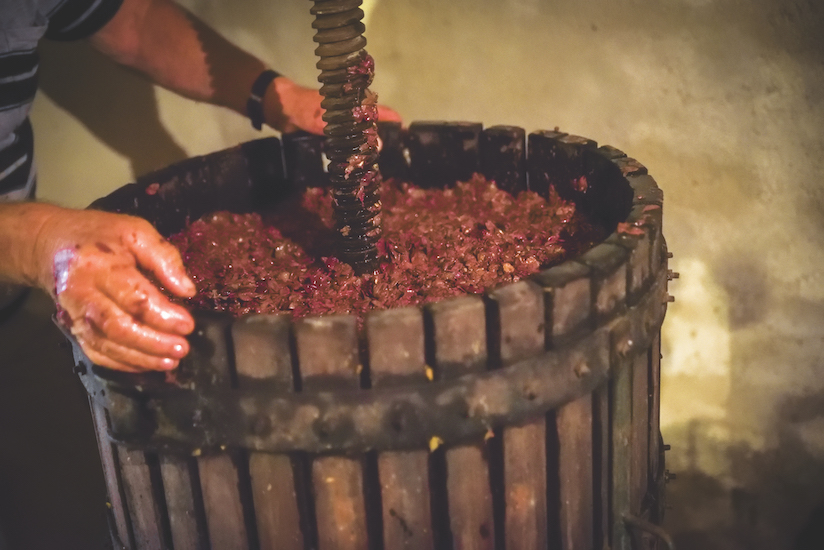I have always been a dive-into-the-deep-end kind of learner. I learned to ride a bike by climbing on my sister’s bike on a small hill and standing up on the pedals and I was off. I learned to play hockey on the ponds and bogs of Massachusetts with considerably older players. And I learned to make wine by visiting Prospero Equipment Corp. in Pleasantville and meeting with the winemaking guy. At the time, I was writing for an international food and wine magazine and had been a regular reviewer on its wine- tasting panel. Prospero is for real and supplies large scale commercial winemakers with equipment and can also outfit the newbie home winemaker’s needs.
I told the winemaker/sales representative there I had visited many wineries and had observed the process many times but had never overseen a batch of wine. In the age of Covid-19 and social isolation, I have a great at-home project for you — winemaking. It’s educational, it’s fun, it’s scientific in a microbiological kind of way, it smells wonderful and it’s a great way to stimulate some home schooling within the family. Plus, when you’re done, you have a product you can enjoy for years to come.
Prospero’s winemaker talked me through the process, drew some pictures with notes and suggested a small book on fermentation. For around $700, I was back in my car with everything I needed, including a couple of five gallon pails of Chardonnay juice, a five gallon pail of Merlot juice and another with Cabernet Sauvignon juice — all from crushed and pressed grapes. I am told you make a better wine by buying the grapes and overseeing the process from the start but I opted to skip that process. I got home and brought everything into the kitchen, washed the five-gallon glass carboys where the fermentation would happen and filled two of the carboys with the Chardonnay. Two other carboys were filled with a Merlot-Cabernet blend. I added the recommended yeasts in the appropriate amounts. I attached a rubber stopper to each carboy, and added a purchased glass gas pressure reliever that allows for CO2 to be released while not allowing ambient air into the process.
I went to bed that night with each carboy sitting expectantly in the kitchen. The next morning I opened the bedroom door and was hit with the smell of fresh fermentation. I walked down the stairs and it was alive. Each of the four carboys was actively fermenting, turning the sugars in the juice into ethanol (alcohol) and carbon dioxide. The juice inside the containers was energetically bubbling throughout the fermentation process, filling the house with a lovely active winery smell. At a point in time, when the fermentation slows and the steady bubbling slows to a trickle, it’s best to rack the wine. Racking is removing the wine from the carboy and removing the dead yeast cells. Yeast cells consume the sugars in the juice and end up dead in the process. If the wine is left in contact with these dead yeast cells, it can have an adverse effect on the taste. Additionally, secondary natural opportunistic yeasts can move in, ruining the wine. This fermentation process takes several days, but each day I was enjoying the microbiology before my eyes.
I cleaned out a bunch of empty bottles I had bought and prepared for the bottling. I used a siphon-type small-hose-process to move the wine into the bottles and, with an inexpensive hand corking machine, I compressed the corks, slid each into the throat of a bottle and released it, creating that tight wine bottle seal. All wines, especially wine blends, need to sit for a while post-bottling to rest and allow flavors within the bottle to merge and blend. And the results? I wasn’t expecting something brilliant and ethereal. But my first winemaking effort did work. I have tasted commercially available red and white wines that aren’t as good as mine. And I have opened some at parties and watched as guests pour and taste and there have been no twisted-up faces.
There are also commercial winemaking operations with all the equipment and a winemaker on staff for you to go there and make your own wine under the supervision of a pro. The City Winery in Manhattan and Westchester Homemade Wine Center in Yorktown Heights will guide you through every step in their facilities. They require you to make a full barrel of wine. They provide the 720 pounds of grapes of your choice and teach you the crushing, pressing and fermentation before the barrel aging and bottling. A barrel will make 240 bottles of wine. Several visits to the complex are required for each step of the process and some of the procedures would benefit from a friend or two to assist. It wouldn’t be difficult to find someone to share the process, the expense and ultimately the wine.
In any event, this will take you deeper into the world of wine. Who says self-isolation can’t be satisfying to the palate? Cheers.
Write me at doug@dougpaulding.com.


